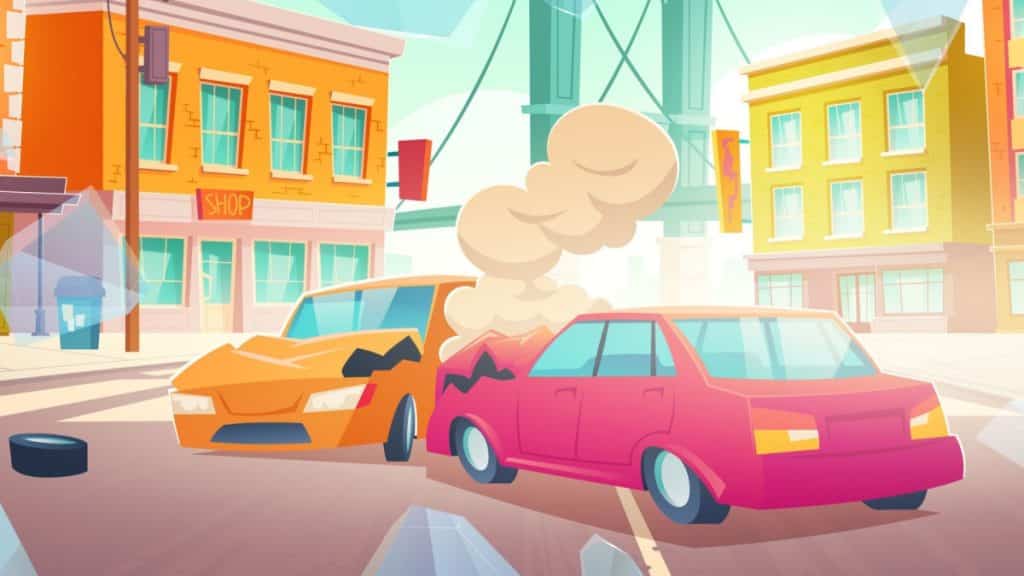T-bone accidents, also known as broadside collisions, happen when one vehicle slams into the side of another, forming a terrible “T” shape. These crashes are especially risky because the impact zones on the sides of cars offer less protection than the front or back.
Being involved in a T-bone accident can be a frightening and confusing experience. Determining liability in a car accident is crucial, as it helps to recover compensation for all the damages the victim has sustained.
If you’ve been injured in a T-bone collision, understanding the concept of liability can help you navigate the legal process and secure the resources you need to recover.
We’ll explore the key factors determining liability in these types of accidents to empower you with the knowledge you need to move forward.
Establishing Fault in T-Bone Collisions
In T-bone accidents, figuring out who’s responsible often boils down to the concept of right-of-way.
Right-of-Way Laws
Right-of-way refers to a driver’s legal right to proceed through an intersection or roadway without stopping or yielding to oncoming traffic. Common scenarios include:
- Intersections: Drivers with a green or stop sign have the right-of-way over those with a red or yield sign.
- Stop Signs: Drivers at a complete stop must yield to those who have already come to a complete stop and are proceeding through the intersection.
Special Considerations:
Due to the high traffic volume, extra caution is advised at busy intersections. Always be aware of surrounding vehicles and double-check for turning cars before proceeding, especially on roads with multiple lanes. Left turns can be risky, so ensure you have ample clearance before turning across oncoming traffic.
Traffic Violations Contributing to T-Bone Crashes
Disobeying traffic laws is a major cause of T-bone accidents. Here are some common violations:
- Running Red Lights: Ignoring a red light can lead to a T-bone collision with a car proceeding through a green light.
- Failing to Yield: Not yielding at a stop sign or when turning left can cause a T-bone with oncoming traffic.
- Speeding: Excessive speed limits a driver’s ability to react and avoid a T-bone accident.
A driver who commits a traffic violation will likely be found at fault for the accident.
Shared Fault (Comparative Negligence)
Things get more complex when both drivers contribute to the accident. Some states follow a comparative negligence system. This means that fault is divided between parties based on their percentage of responsibility for the crash.
For example, imagine a driver who runs a red light and gets T-boned by another car that is speeding. The driver who ran the red light might be found to be 70% at fault, while the speeding driver is 30% at fault. This would affect compensation—the speeding driver’s award would be reduced by 30% to account for their shared responsibility.
Evidence Gathering for Liability Claims
Gathering solid evidence is key to building a strong liability claim. This evidence helps paint a clear picture of the accident and supports your case.
Types of Evidence in T-Bone Accident Cases
Here are some key pieces of evidence to collect:
- Police Report: This document, prepared by the responding officer, contains crucial details like the accident scene sketch, witness statements they collect, and preliminary findings on fault.
- Witness Statements: People who saw the accident can provide valuable accounts of what transpired. If possible, get their names and contact information so they can be contacted later.
- Traffic Camera Footage: If the accident occurred near a traffic camera, the footage might capture the collision and offer valuable visual evidence.
- Vehicle Damage Photos: Take detailed photographs of the damage to all vehicles involved, including close-ups and shots from different angles. This helps document the severity of the impact and potential cause.
- Medical Records: Medical records from doctors, hospitals, and therapists document your injuries and related medical expenses. These are crucial for seeking compensation for medical bills.
Additional Factors Influencing Liability
While right-of-way and traffic violations often play a major role, other factors can influence fault in T-bone accidents.
Driver Impairment
Driving under the influence of alcohol or drugs (DUI/DUI drugs) significantly impairs judgment and reaction time. According to the National Highway Traffic Safety Administration (NHTSA), in 2020, drunk drivers were involved in 29% of all fatal crashes in the US. A driver found to be DUI is likely to be held mostly at fault.
Defective Vehicles or Road Conditions
Mechanical problems, like brake failure or faulty tires, can contribute to a T-bone accident. Similarly, poorly maintained roads with obscured signage or malfunctioning traffic lights can create confusion and lead to collisions.
If a defect or poor road conditions are a contributing factor, the vehicle manufacturer or responsible government agency could share some liability.
Sudden Medical Emergencies
In rare instances, a driver might experience a sudden medical emergency like a heart attack or seizure, causing them to lose control of the vehicle. While this wouldn’t necessarily absolve the driver of fault, it can be considered when determining liability.
Seeking Legal Help for T-Bone Accident Claims
T-bone accidents can leave you with physical injuries, emotional stress, and mountains of paperwork. An experienced attorney can be a valuable asset in navigating the complexities of your case.
